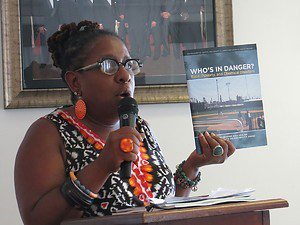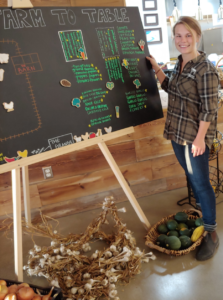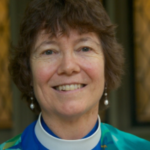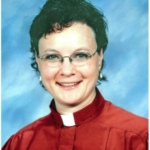Earth Day April 22 – 2020
 Earth Day is an annual event celebrated around the world on April 22 to demonstrate support for environmental protection. First celebrated in 1970, it now includes events coordinated globally by the Earth Day Network in more than 193 countries.
Earth Day is an annual event celebrated around the world on April 22 to demonstrate support for environmental protection. First celebrated in 1970, it now includes events coordinated globally by the Earth Day Network in more than 193 countries.
OUR MISSION: Our mission? To build the world’s largest environmental movement to drive transformative change for people and planet.
Earth Day Network’s mission is to diversify, educate and activate the environmental movement worldwide. Growing out of the first Earth Day in 1970, Earth Day Network is the world’s largest recruiter to the environmental movement, working with more than 75,000 partners in over 190 countries to drive positive action for our planet.
Study group readings
Urgent Message from Mother: Gather the women, save the world, by Jean Shinoda Bolen
This book was written during the BP Deepwater Horizon Oil Spill – thought to be the biggest disaster in the history of the oil industry. The message resonates even more today – because the warnings that this disaster gave us were not heeded…
A Prayerbook for Peace, by John Philip Newell
Morning and evening prayers for the peace of the whole world. Following the pattern of his popular Celtic Benediction, Philip Newell provides lyrical and theologically profound prayers for morning and evening each day of the week. These devotions celebrate the spiritual legacy shared by Jews, Christians, and Muslims and articulate the longings for peace that are closer to the heart of these spiritual traditions than their divisions. Ideal for personal devotions, this book also provides a versatile liturgical resource appropriate for Christian or interfaith use. Each devotion features:
• A Beatitude
• A Prayer of Awareness
• Meditative Readings from the Psalms, the Gospel of Matthew, and the Qu’ran
• A Prayer for the Life of the World
• A Prayer of Blessing
• Rich full-color illustrations drawn from Jewish, Christian, and Islamic art
A Celtic Mass for Peace, Songs for the Earth
This recording of A Celtic Mass for Peace, Songs for the Earth with musicians and singers from both Scotland and the United States, of many diverse heritages, was made in the Vermont landscape where both words and music were written, and is a reflection and expression of the theology/spirituality of liberation and inclusiveness far beyond the confines of any single tradition. It includes a poignant prayer for the Earth:
Heaven and earth are full of your glory, O God.Your presence fills all things.
Yet what have we done?
Creation marred by neglect and abuse of life-forms torn forever out of the fabric of the universe nature ravaged, wealth wasted, earth’s community divided, nations at war, communities fractured, families broken, the human soul sick and far from home.
Great creating Spirit, hear our plea for mercy, hear our prayers for the earth.


 Pray—Plan an Earth Day-themed worship service. Find a wealth of Earth Day Sunday worship resources at www.creationjustice.org/educational-resources.
Pray—Plan an Earth Day-themed worship service. Find a wealth of Earth Day Sunday worship resources at www.creationjustice.org/educational-resources. “Gracias por esta comida. Esta comida. Esta gloriosa y maravillosa comida. Y los animales. Y los vegetales. Y los minerales que lo hacen posible.”
“Gracias por esta comida. Esta comida. Esta gloriosa y maravillosa comida. Y los animales. Y los vegetales. Y los minerales que lo hacen posible.”
 La Granja de Bellweather es un Nuevo cam-pamento, lugar de retiro, centro de educacional de la diocesis episcopal del Ohio. Al fungir como el ge-rente de la granja, una de mis metas principales cuando recorro la granja con los jóvenes es el facili-tar un encuentro con el sitio desde donde extrae-mos la comida, lo cual se traduce en una experiencia con la tierra misma. Algunas veces me pongo nervioso de que necesito comunicar una verdad profunda sobre el universo, del como todos estamos conectados o del como todos nosotros entramos en decadencia día, tras día. Y luego caigo en cuenta de que lo único que necesito hacer es que los jóvenes sean ellos mismos en la granja –con las plantas, con los animales y con el suelo. Comerse un pepino extraído de la planta es magia pura, aunque tu no entiendas de fotosíntesis. Es curativa. Despierta algo muy adentro de nosotros.
La Granja de Bellweather es un Nuevo cam-pamento, lugar de retiro, centro de educacional de la diocesis episcopal del Ohio. Al fungir como el ge-rente de la granja, una de mis metas principales cuando recorro la granja con los jóvenes es el facili-tar un encuentro con el sitio desde donde extrae-mos la comida, lo cual se traduce en una experiencia con la tierra misma. Algunas veces me pongo nervioso de que necesito comunicar una verdad profunda sobre el universo, del como todos estamos conectados o del como todos nosotros entramos en decadencia día, tras día. Y luego caigo en cuenta de que lo único que necesito hacer es que los jóvenes sean ellos mismos en la granja –con las plantas, con los animales y con el suelo. Comerse un pepino extraído de la planta es magia pura, aunque tu no entiendas de fotosíntesis. Es curativa. Despierta algo muy adentro de nosotros.
 Before I go further, though, what is a Bellwether? I often hear this question while working at a place called Bellwether Farm. The term comes down to us from the Middle Ages, when shepherds singled out one ram in a flock to wear a bell and indicate where the flock was going—the Bellwether. In modern times, a bellwether has come to signify a herald of what is to come. In this sense, it is the Church’s vocation to be a bellwether of the kingdom of God, and the vocation of every Christian is to be a bellwether of God’s love, which includes our healing of the earth.
Before I go further, though, what is a Bellwether? I often hear this question while working at a place called Bellwether Farm. The term comes down to us from the Middle Ages, when shepherds singled out one ram in a flock to wear a bell and indicate where the flock was going—the Bellwether. In modern times, a bellwether has come to signify a herald of what is to come. In this sense, it is the Church’s vocation to be a bellwether of the kingdom of God, and the vocation of every Christian is to be a bellwether of God’s love, which includes our healing of the earth. Escrito por las Rev. Dr. Margaret Bullitt-Jonas y Rev. Dr. Leah D. Schade
Escrito por las Rev. Dr. Margaret Bullitt-Jonas y Rev. Dr. Leah D. Schade Margaret es una misionera para la diocesis Episcopal de Massachusetts en la parte oeste y la parte este del estado de Nueva Inglaterra, la iglesia unida de Cristo. Su página web es RevivingCreation.org.
Margaret es una misionera para la diocesis Episcopal de Massachusetts en la parte oeste y la parte este del estado de Nueva Inglaterra, la iglesia unida de Cristo. Su página web es RevivingCreation.org. Leah es una ministra ordenada en la Iglesia evangélica luterana de América, y es también profesora Universitaria en el semanario teológico de Lexington. Ella escribe en el blog www.ecopreacher.blogspot.com.
Leah es una ministra ordenada en la Iglesia evangélica luterana de América, y es también profesora Universitaria en el semanario teológico de Lexington. Ella escribe en el blog www.ecopreacher.blogspot.com.